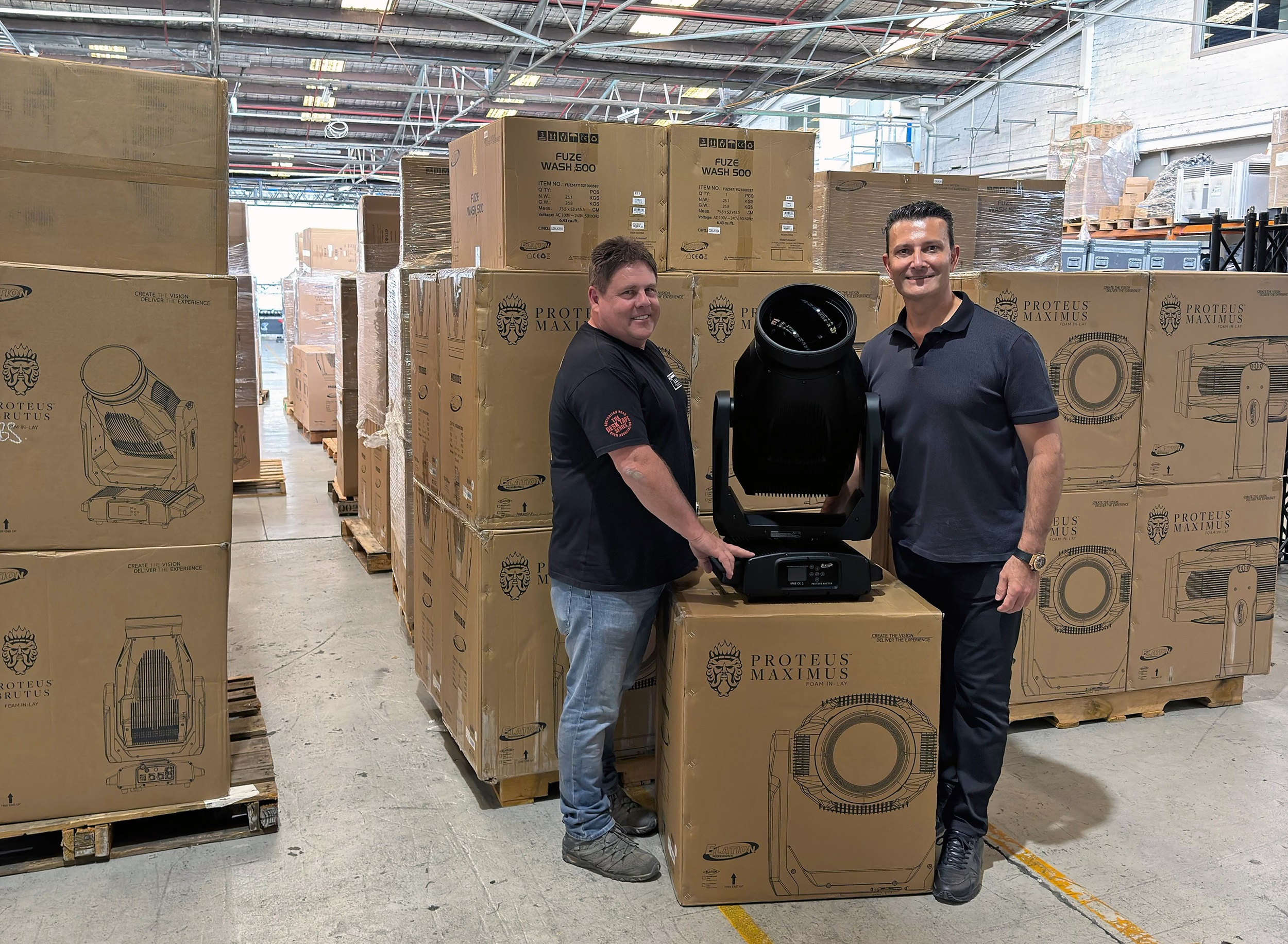LONDON — For The Colour of Money, a new ITV prime time game show, lighting designers Tom Kinane and Svend Pedersen opted against moving lights and smoke. Instead, they used over 50 I-Pix BB4s and BB7s to match up with Patrick Doherty’s heavily LED-based set, creating washes and effects with the LED-based fixtures.
The game show was recorded in Studio 1 of the London Weekend Television HQ, and the designers faced constraints when deciding which lighting instruments could go where. They ended up putting 22 BB4s around the top level of the multi-layered set, rigged just above three G-Lec LED screens, to define the top line of the set.
These BB4s were also used to add punch and brightness for accenting stings and for snaps-to-strong-color scenes. They were mounted on monopoles attached to special i-Pix brackets.
Another 22 BB4s were used for under-lighting large expanses of the set floor space and two sets of Perspex stairs on either side of the studio.
The BB7s were ensconced in the roof and used for down-lighting the stairs and the central circle on the studio floor — with the swipe machine — and also to aid Pedersen in punctuating specific sections of the show for the card swipes. The wide throw of the BB7s covered the set. Six units were placed around the central circle and one above each staircase.
All the BBs were driven by custom video clips played back from three dual output Catalyst digital media servers run by Pedersen from his Wholehog 3 lighting console.
“The greatest thing about the BBs is the homogenized lightsource, which eliminates any pixilation, so the fixtures appear just like a standard smooth tungsten source rather than the point-sources of the LEDs being visible. That and the 16 bit color mixing, which allowed us to create the many offbeat colors required,” said Kinane.
Over 70 color set looks are a vital element of the game, as contestants choose which color machine to play. Each was stuffed full with different quantities of cash, totaling £240,000. In addition to some of the more conventional hues, Pedersen had to create idiosyncratic shades like salmon, lime, lemon, caramel, platinum, tangerine, charcoal, etc, to meet the brief from David Young of production company 12 Yard.
“We simply could not have done this easily with any other lightsource,” said Kinane.
Pedersen added that the sheer power of the BBs gave the show’s stings and accents real impact.
The BBs were supplied to the show by HSL. Kinane and Pedersen said they would be using BBs again for their next projects, including Don't Forget The Lyrics and The Krypton Factor, both to be recorded at Granada Studios in Manchester.
Three dual output Catalyst G5 HD digital media servers formed the control hub driving all the digital lightsources and video surfaces on the set.
The Catalysts were supplied by Ross Williams and operated by Pedersen using a WholeHog 3 console, running 16 DMX universes and controlling up to 2060 individual fixtures.
Pedersen created approximately 200 custom video clips for the show, many of them involving turning the set into the idiosyncratic color schemes needed to match the different "colors" of the money (all real cash) in the machines as the game was played. They also did banner texts of contestants’ names and the program Identification.
The Catalysts drove the 44 i-Pix BB4 and 7 BB7 LED wash lights and nine different screen surfaces, including Barco O-Lite banners curving around the back of the set along with three G-LEC header banners, one large G-LEC background screen, a large high resolution central screen and three low res screens at the back providing "camera candy" for reverse shots of the contestants.
Pedersen made use of the Catalyst’s Mix Windows facility, which allows different outputs to be fed to multiple screens via the ability to assign mixes to layers, which he described as “incredible.”
Mix Windows also slims down the amount of hardware now needed to achieve very complex results, while allowing designers and programmers more options.
One output of Pedersen’s Catalysts was sent to the studio vision mixer, and another to LED screen providers CT’s Barco Folsom picture management system where they were sized to fit the screens.
“It’s completely stable and reliable,” said Kinane, of the Catalyst as a control platform. “We’ve never had a problem with a Catalyst on any of our shows and that’s a paramount consideration as time is always tight and we need to be assured that the machine/s will run with no glitches.”
“Richard Bleasdale’s constant software updates ensures a phenomenal amount of freedom for designers, and it’s great to be able to import images without any file size restrictions or not having to worry about codecs," said Pedersen, also speaking favorably of the service and support from U.K. distributors Projected Image Digital.
For more information, please visit www.i-pix.uk.com and www.pi-digital.co.uk.


